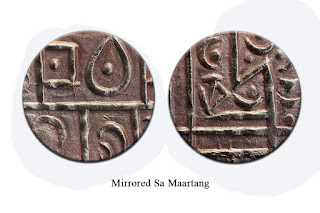I cannot remember how I ended up being a Member of the UNDP’s SENetwork but already by 2006 - that is roughly 18 years back - I was called upon by the organization to write an article on how the country might prepare itself to meet the challenges that is likely to be posed by the emerging trend of mass movement of pastoral population to urban centers. I refused to do so on the grounds that that was the wrong approach to solving the problem – instead, I submitted an article on “How we might work towards counteracting the problem”.
The UNDP decided that the solution I suggested was just too radical and felt that it would be imprudent on their part to publish the article which would be tantamount to endorsing my idea. Fine - but pussy-footing around an issue is no way to solve a problem. And so, the problem was allowed to fester year after year - unchecked.
The term employed to describe the emerging malice then was: "Rural-Urban Migration".
Sometime around 2010-11, the term “Goongtong” was coined.
Around 2015-16 when I began to frantically push the issue of Goongtong to the fore - I coined one additional term - “Yuetong”.
This year, the Members of the Parliament added one brand new nomenclature to the malice that they now agree has reached alarming proportions - “Satong”.
In 2016, I highlighted the problem of Goongtong with the following two articles, in addition to few others.
Beginning January of 2015, I had already authored a series of 10 articles on Goongtong (funded by the BCMD) that was published in the Kuensel – titled “A Malady Called Rural-Urban Migration”:
The ongoing discussions in the Parliament on the twin subjects of Education and Farming seems like a good opportunity to see if we may, for a change, transcend the superfluous verbosity and get down to brass tacks! But I suspect that as usual, this too shall be one that flew over the cuckoo’s nest.
Ban on commercial harvesting of timber in the country was introduced in 1979, necessitated by compulsion. Nearly half a century has passed us by since - times and situations are no long the same - the country’s physical boundaries have contracted and the Mt. Everest has grown taller - but the Forestry Department has remained immobile and stuck in a time-wrap.
It is heartbreaking how we speak of hundreds of thousands of millions of Ngultrums ….. and yet people in the core areas of the country’s capital city - Babesa - are wailing cries of woe - that they lack a simple daily necessity - drinking water. Imagine the plight of the rural folks far removed from the glare and pomposity of the Dashos and Lyoenpos in Thimphu.
Can we, for a change, shelve the astronomical and the gigantic, so that we are left with time and resources to confront, and tackle, the manageable and the doable? It would help.






















